
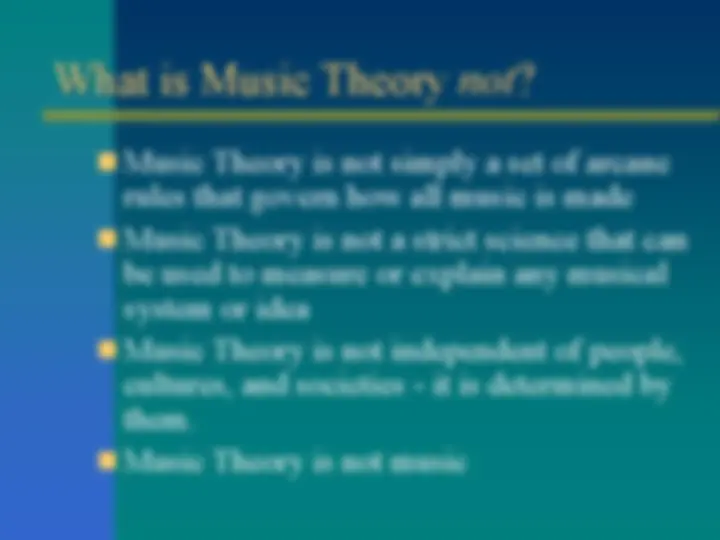
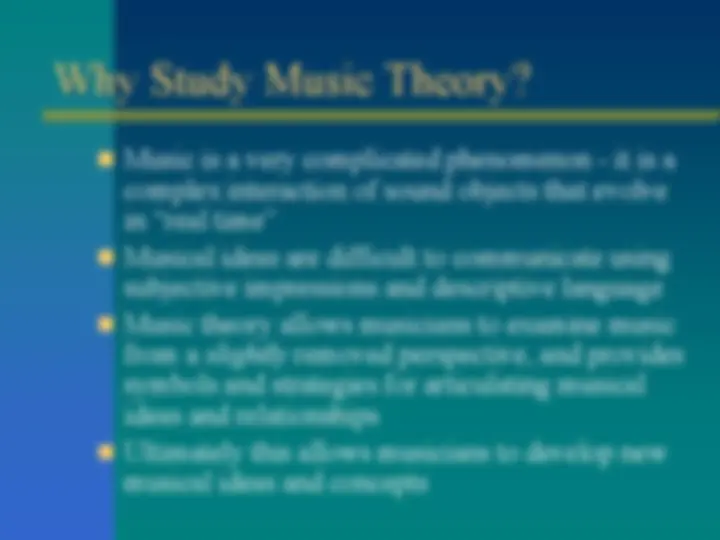
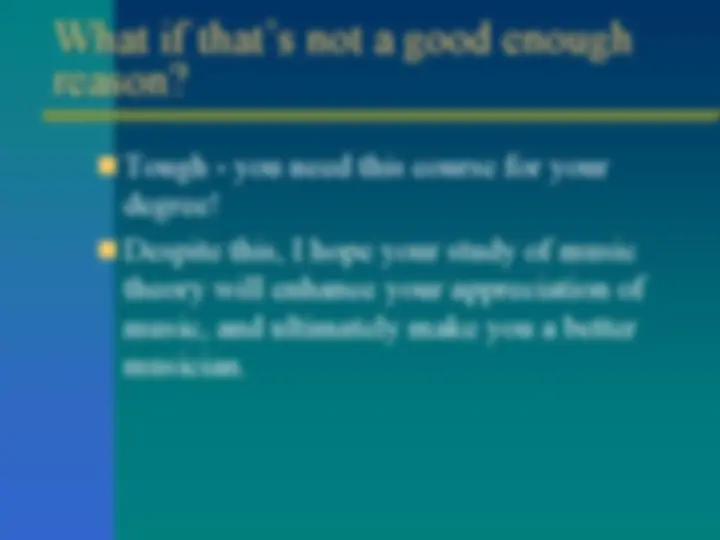
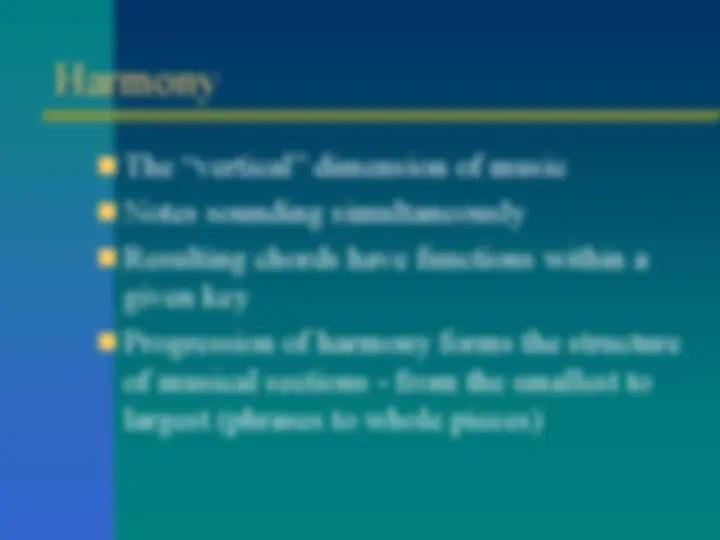
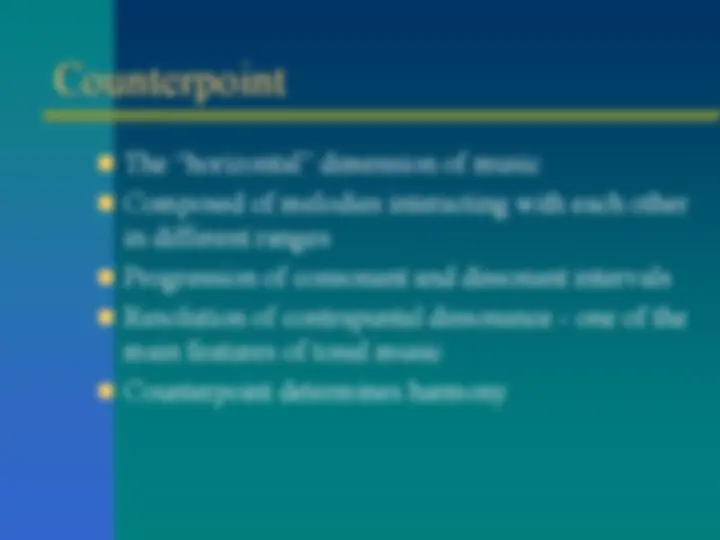
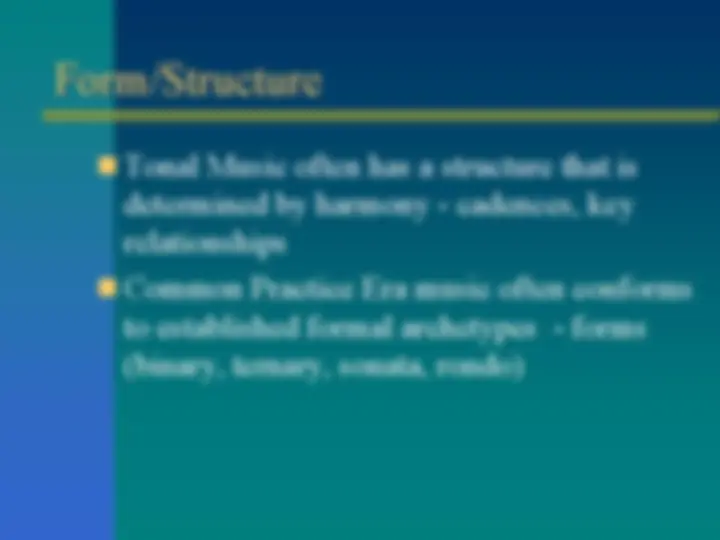
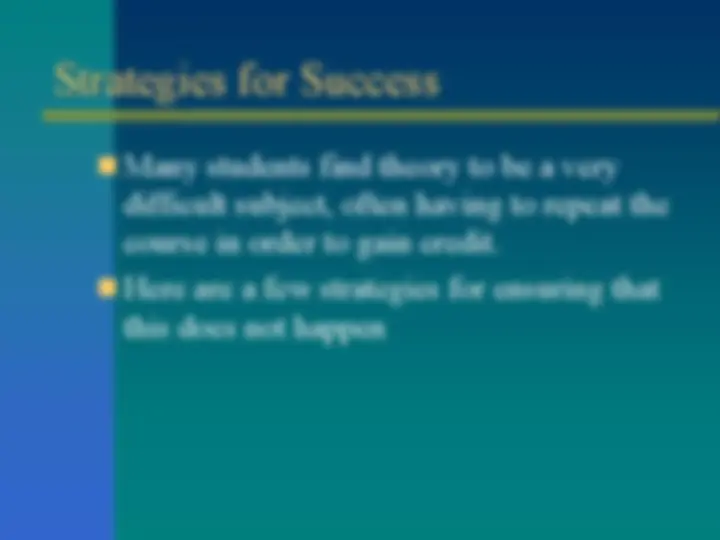
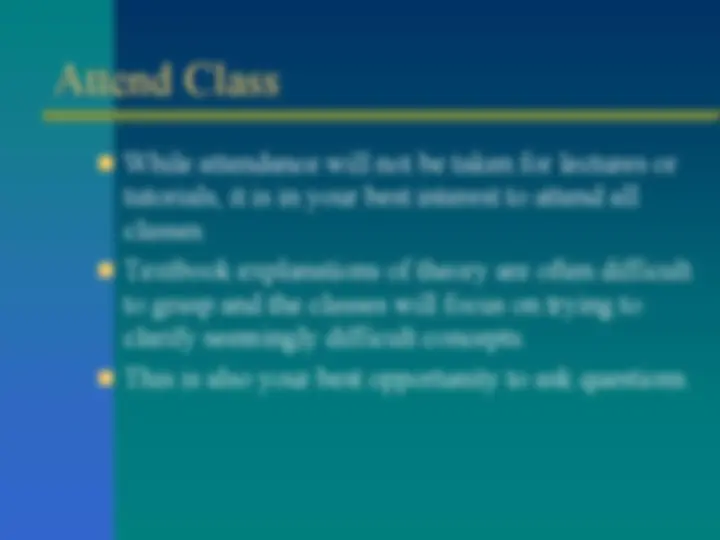
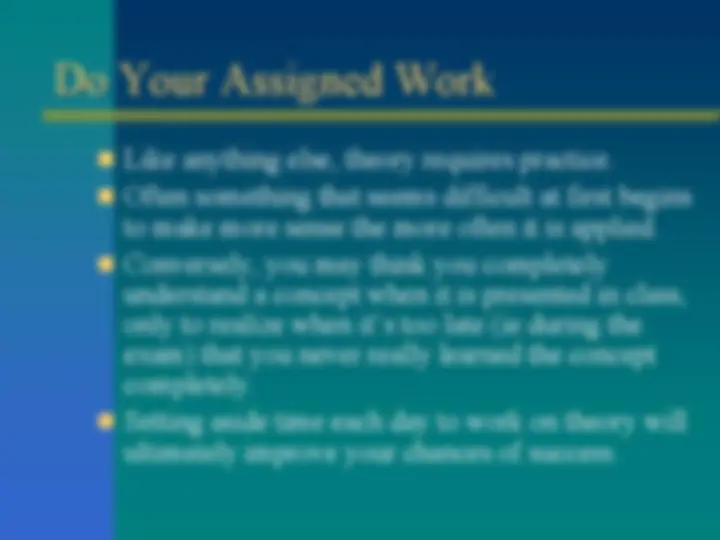

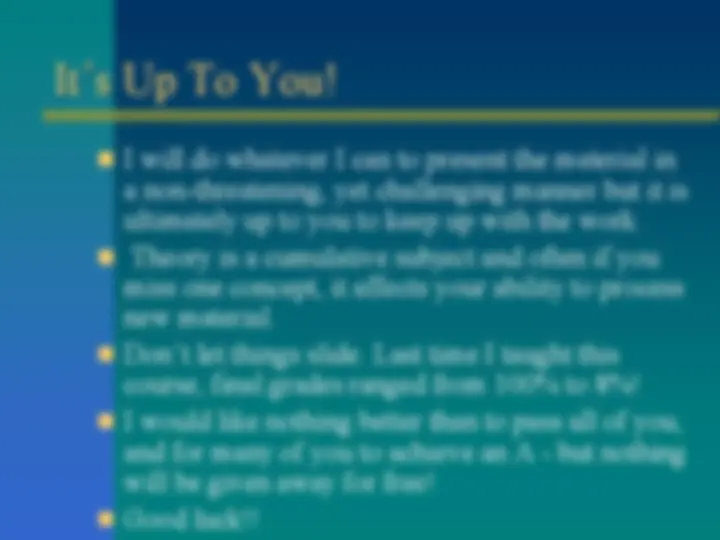



Study with the several resources on Docsity

Earn points by helping other students or get them with a premium plan


Prepare for your exams
Study with the several resources on Docsity

Earn points to download
Earn points by helping other students or get them with a premium plan
Community
Ask the community for help and clear up your study doubts
Discover the best universities in your country according to Docsity users
Free resources
Download our free guides on studying techniques, anxiety management strategies, and thesis advice from Docsity tutors
An introduction to Music Theory, explaining what it is and why it's important for musicians. It covers the elements of music theory including rudiments, harmony, counterpoint, form/structure, analysis, and composition. The document also includes strategies for success in studying music theory.
Typology: Slides
1 / 20

This page cannot be seen from the preview
Don't miss anything!













Music Theory attempts to explain the complex and abstract organization of sounds we call music Music Theory establishes conventions for notating musical information and for communicating musical relationships Music theory forges links between the sonic creations of people and cultures, the systems of thought and organization of societies, and the physical laws that determine the nature of sound
Music is a very complicated phenomenon - it is a complex interaction of sound objects that evolve in “real time” Musical ideas are difficult to communicate using subjective impressions and descriptive language Music theory allows musicians to examine music from a slightly removed perspective, and provides symbols and strategies for articulating musical ideas and relationships Ultimately this allows musicians to develop new musical ideas and concepts
Analysis involves studying an existing piece or excerpt of music and determining its most salient features Often this “deconstructs” the piece to identify how the composer put it together Analysis often takes place within an historical context - particularly regarding established styles or schools of composition Analysis should not, however, simply determine how well a piece fits some “ideal” Analysis should determine what is unique about a piece
While attendance will not be taken for lectures or tutorials, it is in your best interest to attend all classes. Textbook explanations of theory are often difficult to grasp and the classes will focus on trying to clarify seemingly difficult concepts. This is also your best opportunity to ask questions.
I will do whatever I can to present the material in a non-threatening, yet challenging manner but it is ultimately up to you to keep up with the work. Theory is a cumulative subject and often if you miss one concept, it affects your ability to process new material. Don’t let things slide. Last time I taught this course, final grades ranged from 100% to 8%! I would like nothing better than to pass all of you, and for many of you to achieve an A - but nothing will be given away for free! Good luck!!
1. What is the name of the symbol on the far left? 2. What is another way of notating the 2nd symbol? 3. How many 8th notes could fit into one bar according to the time signature? 4. What is the duration in quarter notes of the note shown? 5. What pitch does this note represent? 6. Write the key signature for the major key for which this note is the tonic pitch. 7. What is the tonic pitch of the relative minor key? 8. Write the key signature for the minor key for which this note is the tonic pitch. 9. Write the melodic minor scale scale using accidentals for the scale in which this pitch is the supertonic (2nd) scale degree. 10. Write the major scale including the key signature for the parallel major key. 11. Notate the pitch a major 6th above the note shown, using the treble clef. 12. Invert this interval and rename it. 13. Write the pitch an augmented 4th below the note shown. 14. Invert this interval and rename it. 15. What is a common name used to refer to both of these intervals (in 14 and 15)?